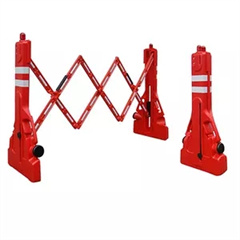Understanding no parking zones is crucial to avoid parking violations, fines, and towing of your vehicle. No parking zones are designated areas where parking is strictly prohibited at all times. These zones are typically established to ensure safety, maintain traffic flow, and facilitate specific activities. Here’s how to understand and identify no parking zones:
- Identify No Parking Signs:
- Look for signs that explicitly indicate “No Parking.” These signs are usually red and white, with a red circle and a horizontal white line across it.
- Pay attention to other signs or symbols that may accompany the “No Parking” sign, providing additional information or restrictions.
- Check for Time Restrictions:
- Some no parking zones may have specific time restrictions indicated on the signs. For example, “No Parking 7 AM to 7 PM” means that parking is prohibited between those hours.
- Be aware that time restrictions can vary from one location to another, so always read the signs carefully.
- Examine Additional Information:
- No parking signs may provide additional information about the reasons for the restriction, such as “Fire Lane,” “Loading Zone,” or “Bus Stop.”
- Understanding the purpose of the zone can help you obey the rules and avoid violations.
- Distance from Curb or Intersection:
- In some areas, parking may be prohibited within a certain distance from the curb or intersection. Look for signs that specify distances, such as “No Parking Within 15 Feet of Curb” or “No Parking Within 30 Feet of Intersection.”
- Fire Hydrants and Driveways:
- No parking is usually allowed within a certain distance (often 15 feet) of a fire hydrant or a private driveway. These zones are vital for emergency access and should be respected.
- Bus Stops and Loading Zones:
- No parking is generally enforced at bus stops to allow for passenger pickup and drop-off. Loading zones are designated for loading and unloading goods.
- Pay attention to these zones, as parking violations can disrupt public transportation and delivery services.
- Keep Clear of Crosswalks:
- Parking near crosswalks is often prohibited to ensure visibility for pedestrians and other road users. Look for signs indicating “No Parking Within X Feet of Crosswalk.”
- Residential No Parking Zones:
- Some residential areas may have restricted parking zones, often requiring permits for residents. These areas aim to prevent non-resident vehicles from parking there.
- Yellow Curbs:
- Yellow-painted curbs often indicate no parking zones, especially near fire stations, hospitals, and other emergency facilities. Yellow zones are typically enforced 24/7.
- Accessible Parking Spaces:
- No parking is allowed in spaces designated for persons with disabilities unless you have the appropriate permit or placard.
- School Zones:
- Some areas near schools may have no parking zones during specific times to ensure student safety during drop-off and pick-up times.
Always read and follow the parking signs in the area where you plan to park. Ignorance of parking regulations is not a valid excuse for violations, and penalties for parking in no parking zones can be costly. If you are uncertain about the rules in a particular location, consider finding alternative parking or seeking guidance from local authorities.







